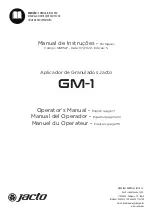
Formulas for Number of Decodes
A-22
MS-860 Industrial Raster Reader User’s Manual
Angled Picket Fence Calculation
The number of complete scans for angled picket fence
is calculated the same as that for picket fence, with the
exception that the scan width is shortened in proportion
to scan tilt.
Improving the Number of Decodes
After changing any of the parameters described in this section, recalculate the number
of decodes.
Scan Speed
Scan speed is a function of motor speed and is adjustable. A slower scan speed may allow
greater symbol range and/or higher decode rates, but at the cost of fewer scans per sym-
bol. Applies to both picket fence and ladder oriented symbols. If your application allows it,
slowing scan speed (the time in seconds that a symbol is fully within the scan width of the
reader) is an effective way to increase the number of decodes.
Range
Adjusting the symbol’s range, if possible, is one of the quickest and most effective ways
to improve decode rates. However, in some applications you may need to select a less
than optimum range, or one that is beyond the fringes of the ranges.
Scan Width
Increasing scan width will increase the number of scans in a picket fence oriented appli-
cation. Scan width is linked with scan range and changing one will usually require a
change in the other.
Symbol Dimensions, Symbol Density, and Symbol Ratio
Not usually an option in most applications, but changes to symbol parameters can
affect number of decodes calculations and possibly decode rates.
If your application allows it, shortening the length of a picket fence symbol means the
symbol will be in the scan range longer and hence receive a greater number of scans.
Increasing the height of a ladder symbol means it will receive more scans. Changing
symbol density and/or symbol ratio is another way ranges, decode rates, etc. can be
altered.
Direction of symbol travel
Scan Line
Angled Picket Fence
Artisan Technology Group - Quality Instrumentation ... Guaranteed | (888) 88-SOURCE | www.artisantg.com
















































